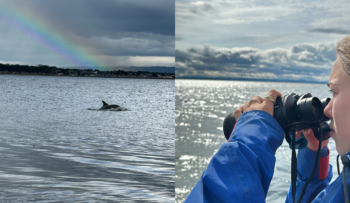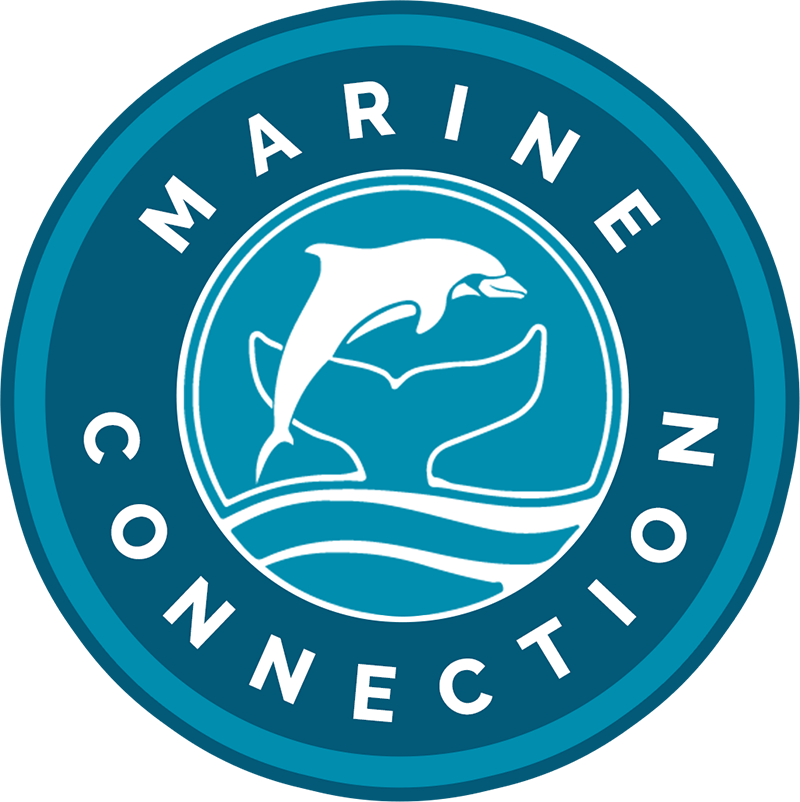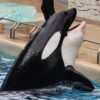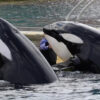
For several years Marine Connection has been supporting a campaign by young cetacean advocate Olivia Mandle, #Noespaisparadelfines, asking the Spanish Government for the scheduled closure of all dolphin parks in Spain. Olivia recently visited the Moray Firth, Scotland where she had the pleasure of seeing the most northerly population of wild bottlenose dolphins for the first time.
Here is Olivia’s blog …
As a second-year IB student, I’m starting to look at universities and I’ve always heard that that Scotland is a great place to study Marine Biology, which is perfect because I’ve always wanted to visit. Before venturing out into nature, since it was my first time, I had to visit Edinburgh, so rich in history, and with such a vibrant culture. I loved the city and I found it to be very conscious and eco-friendly, but I was disappointed to see that outside Edinburgh Castle there were chained owls for tourists to take pictures with.
After a couple of days of city life in Edinburgh, I wanted to see Scotland in its natural, purest form, so I headed up to the Highlands. We first explored the Cairngorms National Park, the largest of its kind in all of Great Britain, and continued further north to the Black Isle. When planning the trip, I asked Margaux Dodds, Director of Marine Connection and Chair of Dolphinaria-Free Europe, about the best way to see dolphins in the wild. She mentioned a place called Chanonry Point, one of the most unique places in the world to see dolphins in the wild from the shore. In this special place, large groups of salmon return towards the two main rivers the Ness and Beauly which feed into the Moray Firth where, at low tide, dolphins come in to feed with their calves.
Hearing about such an incredible place, we studied the tide tables and planned our trip to spend as much time as possible on the beach. The first day we got there half an hour after low tide, but during the five hours we were there, we only saw the cute little face of one seal pup. The next low tide was at four in the morning, so undeterred we set our alarm and went back to the beach. This time we saw a bunch of seals but still no dolphins. That same afternoon we arrived just after low tide and saw a pod of bottlenose dolphins the moment we arrived at the beach. This pod stayed there for almost three hours, left for half an hour and came back to hunt again. We saw mothers with their calves playing and jumping around no more than five meters from the shore. It was the highlight of our trip!
I was also amazed by the more than a hundred, tourists, locals, nature photographers, and families with their kids who during more than five hours and a passing rainstorm were there appreciating nature and these magnificent animals in the wild where they belong.
Since 2020 I have had a campaign on Change.org, #Noespaisparadelfines, asking the Spanish Government for the scheduled closure of all dolphin parks in Spain. I have more than 160.000 signatures that I delivered to the Spanish Congress in Madrid in April 2023. Please support my campaign and share it with your friends and family to ensure that wild animals like dolphins should always be seen in their habitat, in the wild.
Chanonry Point will always hold a special place in my heart. I can’t wait to go back!



